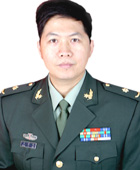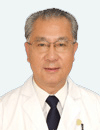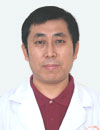fertile formedical innovation.Compared to other countries, America has filed the most patents inthe life sciences,is conducting most of theworld’s clinical trials and has published the mostbiomedical research.
That’s what makes the medical prominence ofCuba all the more surprising to those who view a free market as an essentialdriver of scientific discovery. Cuba is very poor, and yet the countryhas some of thehealthiest, mostlong-lived residents inthe world — as well as a medical invention or two that could run circles aroundU.S. therapies, thanks to government investment in scientific research and apreventive public health approach that views medical care as a birthright.
The island nation, hemmed in by a 54-yeartrade embargo with the U.S., can’t exchange goods with one of the world’slargest economies and the largest medical market. Still, the country is anunlikely global leader in public health and scientific investment.
“If people knew about these cutting-edgetreatments coming out of Cuba, people would want to have them,” said PierreLaRamée, executive director of the Oakland-based Medical Education Cooperationwith Cuba, which advocates for Cuban medical inventions in the U.S. andpublishes an international, peer-reviewed journal focusing on Cuban health andmedicine.
“All of these arcane rules and restrictionsrelated to the embargo that are designed to block commerce with Cuba arekeeping Americans from having access to these treatment opportunities,” LaRaméesaid.
The White House is continuing to lift traderestrictions between the U.S. and Cuba. The most promising change yet cameTuesday, when the Obama administration announced that American dollars will nowbe usable infinancial transactions in Cuba. The administration is also easing travelrestrictions, allowing individuals to visit Cuba for“people topeople” educational tours, whereas before Americans were only allowed to make such trips as partof a tour group.
However, most transactions between Cuba andthe U.S. are still prohibited, which is why Cuban drugs face additionalregulatory hurdles for testing and marketing compared to other drugs developedoverseas. The Treasury Department’s Office of Foreign Assets Control has authorizedthe importation of some Cuban medicines in the past, but only enough to conductresearch and clinical trials, according to a spokeswoman for the Treasury.
Perhaps the most well-known Cubaninnovation is the vaccine CimaVax. Invented by researchers at the Center of Molecular Immunology (CIM)in Havana, CimaVax targets a growth factor in cancer cells in a way thatcan arrest the spread of the disease. It can be used as both a treatment forlung cancer patients and a preventive measure for people at high risk of thedisease.
A reported 5,000patients worldwide havebeen treated with CimaVax. It has no known side effects, and the shot costs theCuban government $1 to make.
The New York-based Roswell Park CancerInstitute is evaluating CimaVax for use in the U.S. It’s also trying to getclinical trials underway to replicate Cuban scientists’ findings, per U.S. Foodand Drug Administration regulations.
MoreAmericans die from lung cancer than from any other type of cancer, which is whymany people are eager for CimaVax to hit the U.S. market soon.
Here are three additional medicalinnovations that the U.S. could benefit from if relations between the U.S. andCuba continue to thaw.
1. More cancer treatments
Cancer is not one disease, but a collectionof hundreds ofdifferent illnesses.This makes finding one “cure” difficult, if not impossible. But over the years,scientists have developed a variety of different treatments that can transformcancer into a chronic, survivable condition.
About 1.7million Americans willbe diagnosed with cancer this year, and about 600,000 are expected to die ofit.
In addition to CimaVax, Roswell Park is alsoinvestigating Racotumomab and VSSP — two more promising cancer drugsinvented by CIM. Racotumomab targets a molecule that scientists believe isfound on all cancer cells, which means the drug could one day be effectiveagainst blood cancers as well as the solid tumors that accompany diseases likelung, breast, prostate and colon cancer. VSSP, originally designed as acompound to help boost the immune response to vaccines, also appears to enhancethe anti-cancer immune response.
Racotumomab is in phase two and threetrials in Cuba (these clinicaltrial stages assesseffectiveness, side effects and adverse reactions), while VSSP is in earlyclinical trials. The VSSP research is so preliminary that Cuban scientists’documents still have to be translated from Spanish into English, says Dr.Kelvin Lee, chair of Roswell Park’s department of immunology.
These drugs aren’t as fully developed asCimaVax, says Lee, but they appear to have great potential. Roswell Park ispreparing for a clinical trial to test Racotumomab in multiple myeloma, andit’s prepping VSSP for three trials — two in kidney cancer and one in breastcancer.
2. A treatment for diabetic foot ulcers
When uncontrolled diabetes causes nerve andblood vessel damage ina person’s foot, it can lead to one of the most debilitating complications ofthe disease: the development of foot ulcers — deep, red sores that canpenetrate to the bone. These ulcers can become vulnerable to gangrene (tissuedeath), and in a worst-case scenario can result in toe, foot orleg amputations.
Subscribe to the Lifestyle email.
Life hacks and juicy stories to get youthrough the week.
About 73,000U.S.?adults with diabetes had their lower limbs amputated in 2010, according to theAmerican Diabetes Association. Multiple studies of differentpopulations ofpeople who have had their lower limbs amputated show that the procedure islinked to an increased risk of early death, suggesting either that surgery is atrauma many people don’t survive, or that people who submit to this kind ofamputation are some of the most vulnerable and at-risk patients in care.
Since 2006, Cuba has had a drug for footulcers called Heberprot-P that prevents the need for amputations. Invented byscientists at the Center for Genetic Engineering and Biotechnology in Havana,the treatment, which its creators describe as an “epidermal growth factor,” isinjected near the affected area and can accelerate the skin’s healing process,closing a wound safely over the course of about three months. By 2013,Heberprot-P had been registered in 15 other countries and used to treat more than100,000 patients.
Dr. David Armstrong, director of theSouthern Arizona Limb Salvage Alliance and a professor of surgery at Universityof Arizona, says he’s excited about the treatment, though he emphasized thatHeberprot-P would still have to go through trials in the States to demonstrateits effectiveness.
“What I want is for this to come toclinical trials in the U.S., to give it a fair shot and see whether or not itlives up to its current promise,” he said.
Armstrong also noted that besidesamputation, the only treatment currently available to Americans with diabeticfoot ulcers is a cream witha “black box warning,” indicatingthat the treatment has serious or life-threatening side effects.
3. Treatment for advanced head and necktumors
Surgery isthe primary way totreat most head and neck tumors, but these procedures can severely affectpeople’s ability to chew, swallowor talk.
Head and neck cancers make up approximately3 percent of all cancers in the U.S., affecting about 52,000Americans every year. Alcoholand tobacco use, as well as human papillomavirus, are major riskfactors of the diseases.
Nimotuzumab, patented inthe U.S. in 1999 byCIM scientists, is a treatment for various head and neck cancers, includingsquamous cell carcinoma of the head and neck (tumors that form on the mucosalsurfaces of the mouth, throat and nose), glioma (brain tumors) andnasopharyngeal cancer. Monoclonal antibodies in the medicine attach toepidermal growth factor receptors on the surface of the cancer cell, thuspreventing it from dividing and spreading the cancer.
Nimotuzumab has had orphan drug status inthe U.S. for the treatment of glioma since 2004 and for pancreatic cancer since2015. This designation is granted to promising drugs that are not yetlicensed in the U.S. Researcherscan test the drug for rare diseases in clinical trials, but it’s not availableto the general public. In fact, Lee said, Roswell Park is preparing for anotherclinical trial of Nimotuzumab in combination with an FDA-approved treatment tosee how effective it will be against lung cancer.
Dr. Eric Bouffet, director of the braintumor program at Toronto’s Hospital ForSick Children, isthe only investigator to date who has completed a Nimotuzumab trial in NorthAmerica. He tested its efficacy in children against diffuse pontine glioma(aggressive and difficult-to-treat brain tumors) across multiple sites inCanada and the U.S., and found that the drug wasn’t effective. He published theresults in 2014.
“As far as Nimotuzumab is concerned, atleast in the pediatric oncology setting, there isn’t any study that has beensuccessful enough to influence the FDA to allow it [to] be licensed or approvedfor pediatric use in North America,” Bouffet said.
But despite early disappointment in U.S.trials, Dr. Dimitrios Colevas, a medical oncologist who specializes in new drugdevelopment for head and neck cancer at Stanford, says that Nimotuzumab may beunique compared to other cancer medicines that also target epidermal growthfactor receptors, in that it doesn’t seem to have thesame toxicside effects.
The drugs Cetuximab and Panitumumab, whichare in the same class as Nimotuzumab but are available in the U.S., can causeunsightly and unpleasant acne-like rashes, while international reports aboutNimotuzumab suggest its incidence of rash is a lot lower. Indeed, an Italian studyfound that Nimotuzumab,in combination with another drug and radiation treatment, appeared to induce aresponse with few side effects.
However, Colevas can’t know for sure ifNimotuzumab has fewer side effects than other drugs in its class, or howeffective Nimotuzumab is compared to related treatments, because Bouffet’s is the only trial ofthe drug that has been completed in the U.S. In contrast, China has completedor is currently conducting at least 25Nimotuzumab trials.For any other drug that wasn’t made in Cuba, Colevas said, that ratio wouldprobably be reversed.
“This drug is not some new drug, [and] it’sbeen around as long as the others,” Colevas said. “Wouldn’t it have been niceif they all could have been available for testing, and we could have allowedscientific and medical reasons to drive why one or the other came to the marketin a particular place, rather than political embargoes?”
As economic and diplomatic relationsbetween the U.S. and Cuba continue to normalize, here’s hoping that thesepromising Cuban medical treatments can be investigated fully in the U.S.Americans have been waiting long enough.
免责声明:此文出于传递更多信息之目的。文章所述内容仅代表文章原作者的个人观点。所写文章的原创性以及文中陈述信息未经证实,对该文所写全部或者部分内容、文字的真实性、有效性不作任何保证或承诺,请读者仅作参考,并请自行仔细核实相关内容。


























